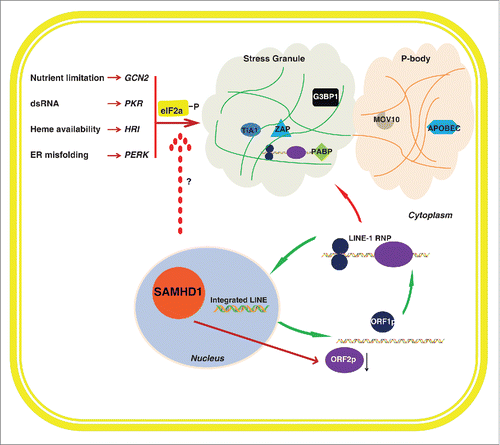Figures & data
Figure 1. Restriction of LINE-1 by SAMHD1 and stress granules. LINE-1 ORF1p and ORF2p associate with LINE-1 RNA and together form RNP complexes. LINE-1 RNP complexes enter the nucleus where LINE-1 RNA is reverse transcribed into DNA by a target-primed mechanism. Formation of stress granules is stimulated by eIF2α phosphorylation that is catalyzed by different kinases that are activated in response to different types of stresses. The LINE-1 restriction factors including G3BP1, TIA1, ZAP, PABP, APOBEC and MOV10 are co-localized with LINE-1 RNP in stress granules or P-bodies. Stress granules appear to serve as the cytoplasmic structure where LINE-1 RNP is sequestered in association with anti-LINE-1 factors that together achieve the maximal control of LINE-1. SAMHD1 enhances stress granules formation via modulating the phosphorylation of eIF2α by mechanisms to be elucidated.

